October 7 was the bloodiest day in Jewish history since the Holocaust. Some refer to it as Israel’s 9/11, though proportionally it was like fifteen 9/11s. However, numbers rarely tell the full story and here they fall devastatingly short.
I was awake when it started. I’ve always been a night owl but staying up until six in the morning is unusual for me. On that bright fall morning I heard sounds like a thunderstorm and went outside to see what was going on. I live on a hill overlooking Gush Dan, the informal megalopolis that’s home for almost half the population of this stamp-sized country. When something big happens I can often see it.
Dani, a childhood friend from Holon, a town about twenty miles away, was woken up by the sirens (called Red Color in Israel) and started chatting with me. Sirens are nothing unusual here — Gaza has been intermittently bombing our cities for most of my adult life — but we both felt today was different. I walked toward the lookout, my attention divided between the online world and the real one.
The sky was streaked with white lines painted by interceptors. The air shook with the frequency of the explosions. Far away, wispy smoke dissipated in the breeze. From the moment I stepped outside, it was clear this was the most massive barrage of my lifetime. However, we’d learned not to worry about rockets: The Iron Dome system isn’t perfect, but it’s good enough to make rockets little more than a nuisance.
The phone told me a different story, one I found impossible to believe at first. Like most of my peers, I get my news from Twitter and Telegram. Both are awash with misinformation. However, this time the evidence was too overwhelming to ignore.
My phone showed videos of ISIS-style pickup trucks inside Israeli cities, of collapsed border fences and hordes of screaming invaders wielding knives, rifles and rocket launchers. These were sights we’re used to seeing from massacres in the Sierra Leone civil war, not in our backyard. The scale of it was unimaginable. This wasn’t an infiltration but a full-scale invasion by thousands of well-armed militants followed by bloodthirsty civilian opportunists who came to rape, pillage and murder. There were even children and handicapped people among the attackers.
As I thumbed through the videos, I noticed the surprise in the eyes of the terrorists as they rolled through the border unopposed. Even they didn’t expect this level of success, and perhaps on some level they also realized the price they’d pay for it.
How could this have happened? I still can’t explain it.
In the following days, people were glued to screens that inundated them with atrocities. A pile of bullet-ridden corpses of elderly women in a bus stop, beautiful young people hunted down in the fields around a music festival, terrified women and children dragged through cheering masses that kicked and spat at them, Arab children beating and humiliating kidnapped Jewish children, blood-crazed mobs mutilating the bodies of the slain. The count of the dead kept increasing: sixty, 100, 300, 600… soon it became clear it would cross 1,000.
There were rare moments of light too — dozens of hostages held in Be’eri rescued by the Yamam, Israel’s national counterterrorism unit. Inbal Rabin-Liberman, Israel’s first ever female security coordinator, managed to organize a quick response and saved her community of Nir-Am, killing and injuring dozens of heavily armed terrorists. A female tank crew showed amazing initiative and saved countless lives in Holit and Sufa by running over dozens of attackers. A Bedouin named Youssef Ziadna drove through bullets and rockets to save thirty people by cramming them into his fourteen-seat minibus and driving through dirt roads. Righteous Among the Nations, echoes of the Holocaust.
A couple of days later, after the fugue state of the atrocities passed, Dani and I decided to meet for a walk, away from the merciless screens. As I drove through the woods, I saw something astonishing. Normally, you rarely see another car going down that road. If someone is parked, it’s because their car has broken down or they’re answering a call of nature. This time, there were thousands of cars parked along the road, almost two miles of them. Countless soldiers hugged their wives, moms, children, picked up sandwiches and travel bags, slapped each other on the back and walked to a nearby base. It reminded me of the scene in Game of Thrones when the Northmen marched south. It was a humbling sight.
Everyone wanted to pitch in after Black Saturday. This phrase is used so often it has become a cliché, but in this case it’s almost mathematically precise: it was the best of times, it was the worst of times. The following day provided us with an opportunity to see how true it can be.
Osnat Bar Natan, the director of a Pilates studio in Ramat Gan, organized donations for the troops, converting her studio into a warehouse. People brought food and supplies and her students packed them into boxes addressed to various bases in the south. However, they didn’t have anyone eager to drive into a combat zone to deliver the packages. Enter these two idiots: on the morning of October 12, Dani and I crammed my humble Yaris with snacks, flip-flops, coffee, tea, tobacco, mattresses, kosher muffins, veggie proteins, gluten-free food and several mystery boxes like it was a Tetris game, and made our first trip to the Gaza Envelope.
The situation in the Gaza Envelope was surreal; there were hundreds of tanks, APCs and fuel trucks standing in fields. Huge smoke columns rising on the horizon. Flares, rockets and warplanes roaring above us. At one point a flock of thousands of crows crossed the sky in the direction of Gaza. The air smelled of fire and rot. It was an apocalyptic scene.
We drove past a bullet-ridden car that had been roughly pushed off the road and met a group of reservists riding in a jeep. They were lost because to everyone’s surprise, GPS services were jammed in the region (which we later learned resulted in some very amusing Tinder matches). We followed them for safety, making every wrong turn imaginable until we reached our first destination.
The officer who came to meet us had arrived all the way from England. He was an Israeli reserve officer who headed back to Israel as soon as he could. As we spoke, we heard a Red Color alarm and ran for shelter — this close to Gaza, you only have fifteen seconds.
Back on the road, we passed by barbecues organized by civilians for the troops. The mood was like a festival. Such a classic Jewish trait; to go from sorrow to joy in an eye blink. “They tried to kill us. They failed. Let’s eat!”
The next location we headed for was the HQ of the Rotem battalion of the Givati brigade. The atmosphere there was more somber. The troopers we met had been among the first responders on October 7. They saw atrocities and lost friends just days before. They were grim and tired.
“We’re like feral dogs. We’re waiting for our leashes to be removed,” a staff sergeant said. It was his birthday. Coincidentally, this was also Dani’s birthday. A party seemed in order. We had a cup of coffee and tasted a few of the endless cakes forced upon us to the sound of a mortar shelling from Gaza.
During those days, you spoke to every person on the street as if he was an old friend. Sadly, this magical unity didn’t last: “Two Jews, three opinions.” Another classic trait.
Israel soon found itself fighting on many fronts; there were drone and missile attacks from Lebanon, Iraq and Yemen and a wave of ramming, shooting and stabbing attacks from the West Bank. Dozens of Islamic militias but a single master of puppets: the Islamic Republic of Iran. So far, it has avoided any consequences for this multipronged aggression.
The attacks from Lebanon proved to be the most devastating. The government decided on a limited response to avoid fighting two ground wars at once, forcing almost a hundred thousand displaced northerners to watch helplessly as their homes and livelihoods were destroyed by constant Hezbollah barrages that started right after the surprise attack from Gaza and continue to this day.
The old rivalry between the “only Bibi” and the “anyone but Bibi” camps that had reached a peak during the controversial judicial reform of 2023 returned in the form of the hostage debate, something Israelis are extremely sensitive about. In November, Israel and Gaza had a truce during which they exchanged 105 hostages for 240 prisoners. This was controversial because many remembered what happened after Israel released over a thousand prisoners with blood on their hands in return for a single soldier in 2011 — they knew all too well that that set of prisoners included Yahya Sinwar, the chief architect of Black Saturday, and many of his henchmen.
The debate over policy became more heated as Hamas refused another truce and insisted on a full Israeli withdrawal from Gaza. This would allow it to rebuild its vast tunnel network and start smuggling weapons from Egypt again. The bombing of Israeli cities would soon recommence, followed by another war, perhaps this time with Hezbollah or Islamists from Jordan or Syria joining in the surprise attack.
Everyone wants to see the hostages returned, but at what cost? Hundreds of Israeli lives? Thousands? This nightmare all over again, only worse? Even the “lightweight” Hamas prisoners released in November have since taken part in attacks against Israelis. What would happen if we released hundreds of “heavyweights?” What message would we be sending to other terrorist organizations across the world?
Over the period from December to February, Bring Them Home Now, the movement that represents some of the hostage families, became increasingly aggressive in its demands to accept any deal, even if it meant losing the war or the return of only some of the hostages. The organizations that have opposed Bibi for years slid into the movement like a hand into a glove, weaponizing the pain of the families to destabilize the country with roadblocks and rowdy protests.
President Joe Biden and Vice President Kamala Harris made the situation worse by pressuring Israel to accept a ceasefire deal while conditioning aid to Israel on Israel’s paradoxically delivering aid to the enemy, turning the war into a slog. “We don’t negotiate with terrorists, but you should.”
American pressure and internal Israeli division boosted Hamas’s confidence and made it more obstinate. At the same time, the tit-for-tat with Hezbollah near the Lebanese border grew bloodier, making Israelis wonder if we’ve given up on the north for good. Everyone is asking, “What is Bibi waiting for?” Perhaps he’s waiting for the results of the upcoming elections in the US before committing to any fateful decisions. He is a master of inaction, which is what allowed Israel’s enemies to build sufficient power to launch this horrific attack. However, the same trait allows him to resist tremendous pressure from all directions. He’s nothing if not steadfast.
The present situation in Israel has become a waiting game and Israelis are adjusting. In the past, we were a culture that wanted everything here and now while the enemy had the patience to play the long game. Now, for the first time in my life, I see Jews display grim steadfastness while Arabs cry, “We’ve run out of patience. We’re tired.”
In the end, our ability to hold fast may prove to be the most important weapon of all.
This article was originally published in The Spectator’s October 2024 World edition.



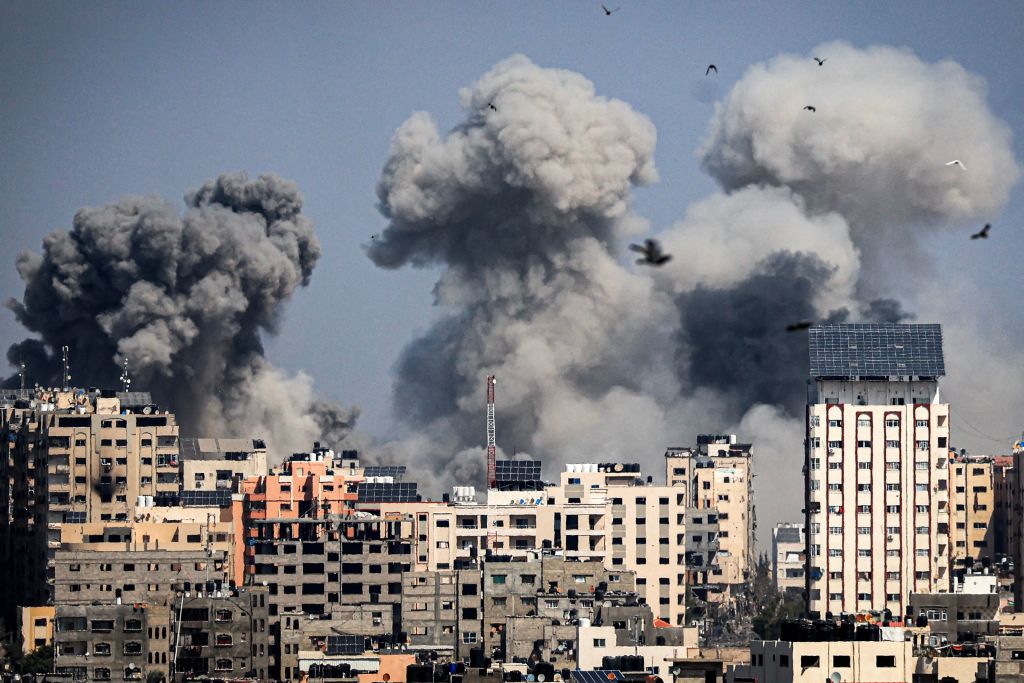









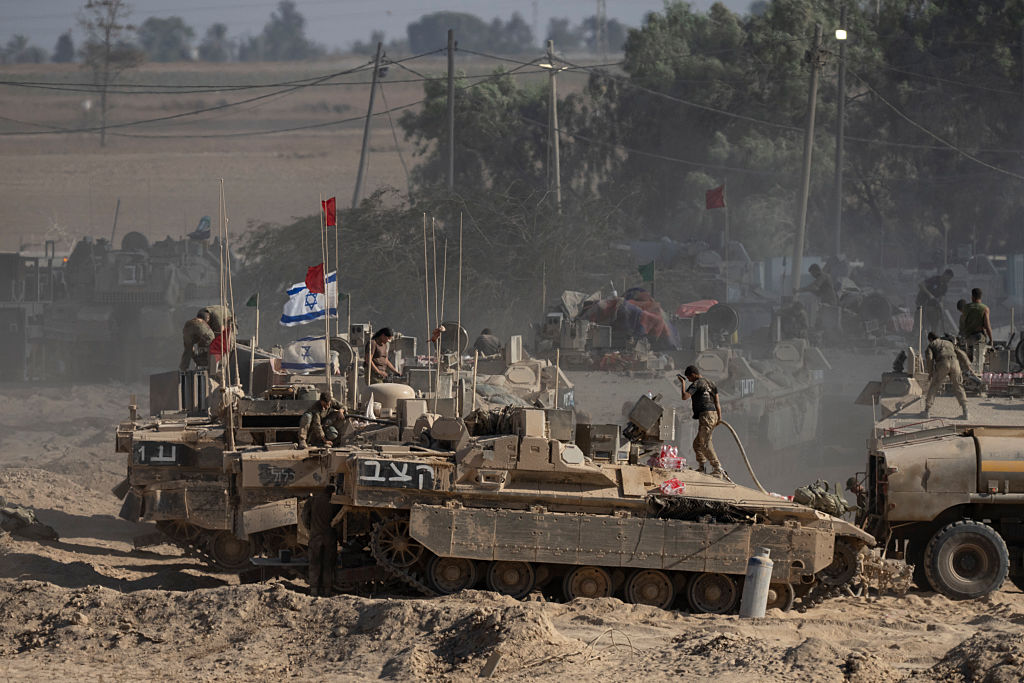

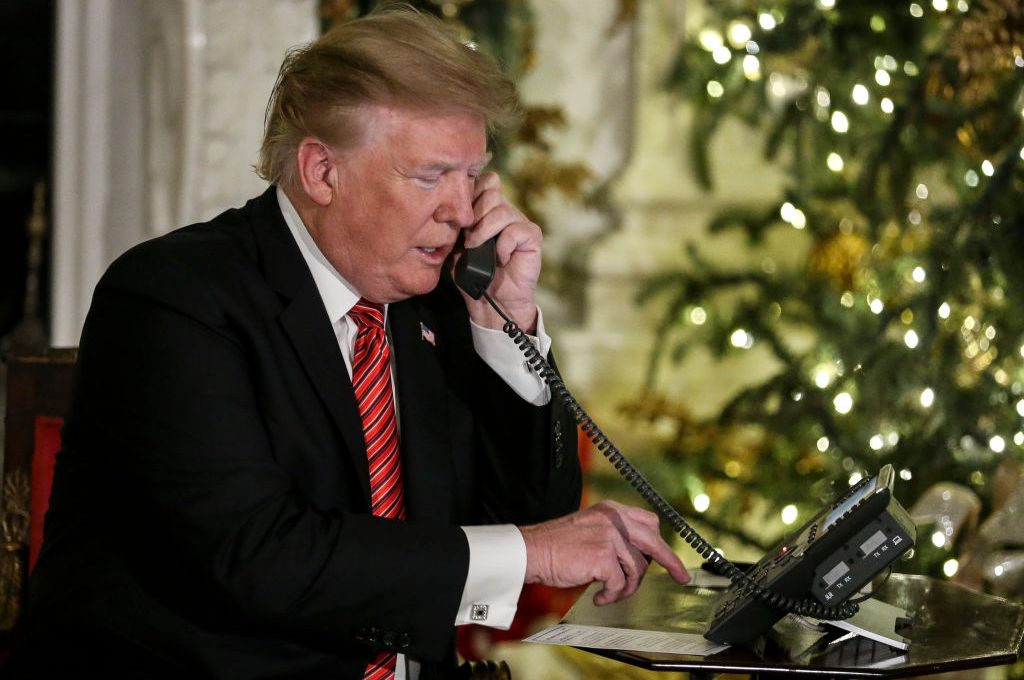
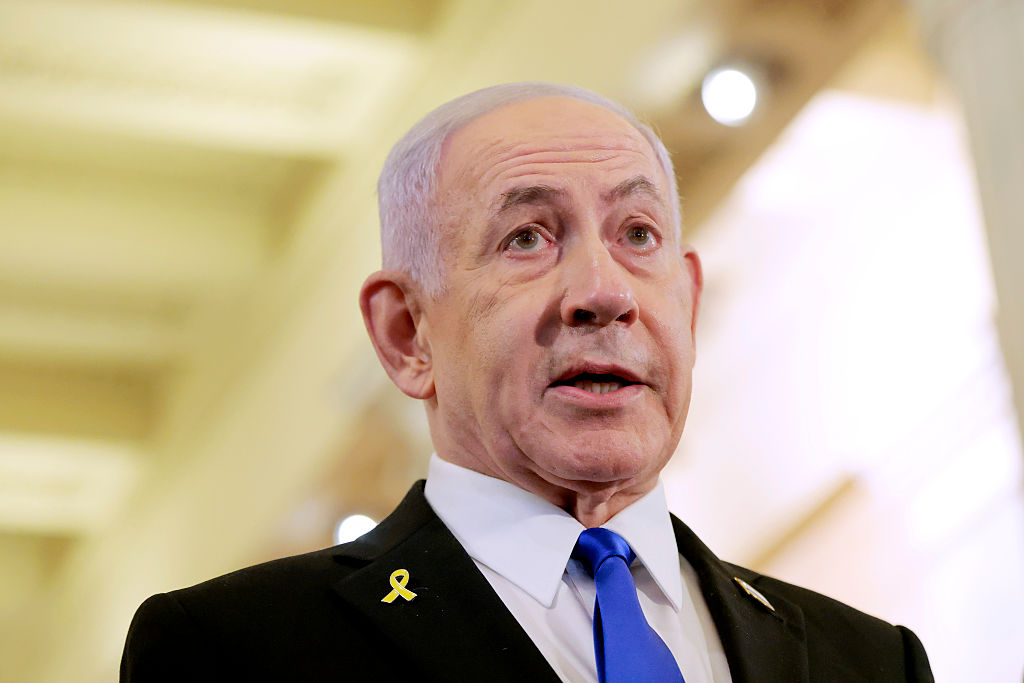

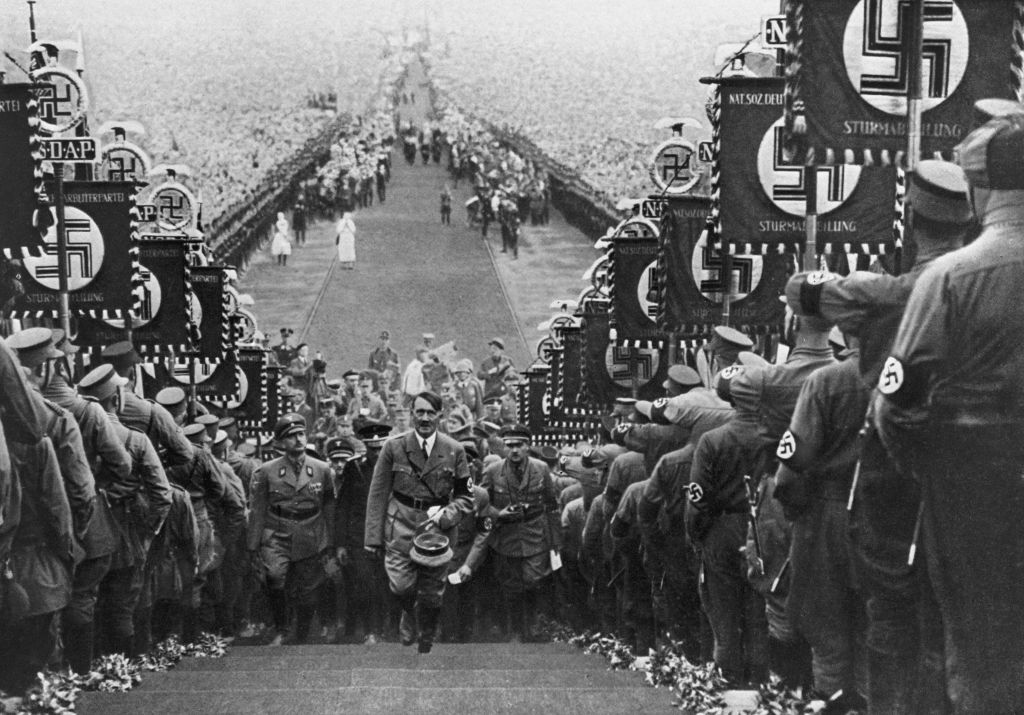







Leave a Reply